By William E. Welsh
Dawn broke clear and hot over Constantinople on July 17, 1203.
All manner of war machines were clustered around the Latin crusaders’ fortified camp on a hill where the Monastery of Saints Cosmas and Damian was located. Giant stones flung by mangonels inside the city flew through the air toward the crusader’s camp. The crusaders made final preparations for an advance. Their objective was the Palace of Blachernae in the northeastern quadrant of the imperial city.
Using hide-covered tortoise shells to protect infantry and sappers, the crusaders advanced. Others marched toward the walls with scaling ladders under the protection of crossbowmen and archers who showered the tops of the walls with quarrels and arrows to keep the defenders pinned down.
When the crusaders reached the wall, ladders were raised and placed against the wall. From the tops of the walls, the defenders hurled stones and poured hot sand and oil on the attackers.
“By dint of strenuous efforts two knights and two sergeants managed to scale the ladders and make themselves masters of the wall,” wrote Geoffrey of Villehardouin, Marshal of Champagne, who witnessed the attack. “A good 15 of our men got up on top, and were quickly involved in a hand-to-hand contest of battle-axes against swords. The [Varangian Guard] inside the barbican plucked up courage and fought back so savagely that they drove our men out.”
A short distance away, the Venetian navy began to assail the shorter seaward walls along the inlet known as the Golden Horn. The simultaneous attack was meant to stretch Emperor Alexius III’s resources and gain access to the city, whether by a breach in the wall or a successful attack on one of the towers atop the seaward wall. “The din was so tremendous it seemed as if both land and sea were crumbling in pieces,” wrote Villehardouin.
When his galley captains shied from beaching their vessels on the narrow strip of land beneath the seaward walls, Venetian Doge Enrico Dandolo shouted to the crew of his flagship to put him ashore, which they did with a company of marines. Following his lead, the captains of other war galleys also beached their craft. “As soon as the other Venetians saw this banner on land, and their lord’s galley touching before them, every man of them felt deeply ashamed, and all made for the shore,” wrote Villehardouin.
Watching the attack from one of the Venetian ships was 21-year-old Alexius Angelus, the son of deposed Byzantine Emperor Isaac II Angelus, who languished in a prison inside the city. The young prince had escaped the year before to enlist the help of the West in overthrowing usurper Alexius III. He had found a welcome ally in Boniface of Montferrat, the leader of the Fourth Crusade, who saw in the prince’s plight a way that the crusaders might repay their massive debt to the Venetians for provisioning and transporting them to the Holy Land.
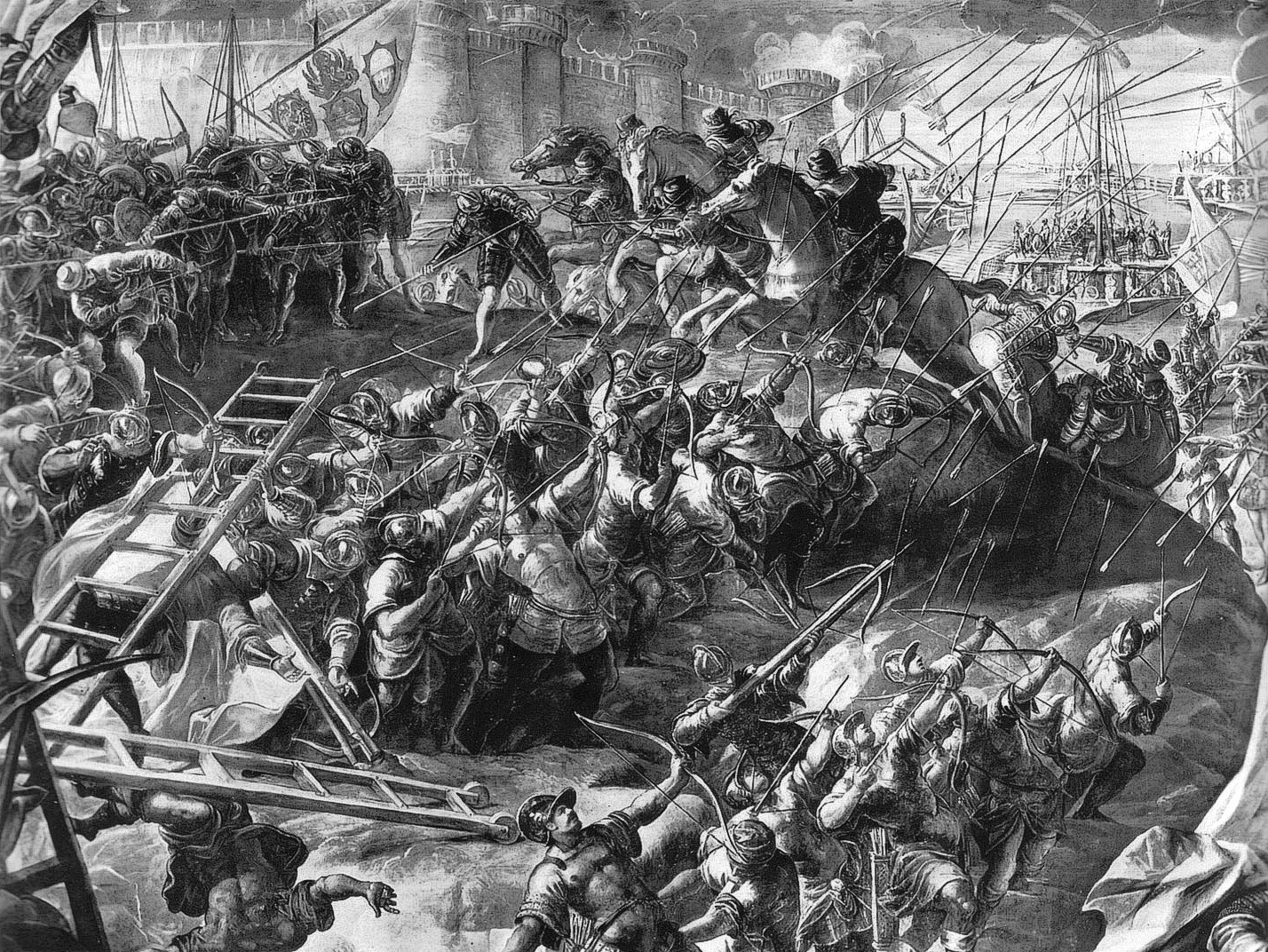
Dandolo had agreed with Boniface that a diversion to Constantinople was a sound idea. The Byzantine prince had promised in negotiations with the Latin crusaders that he would pay them 200,000 silver marks if they restored his family to the throne. The young prince signed an agreement known as the Treaty of Zara and took a solemn oath. Both the crusaders and the Venetians intended to hold him to that oath, come what may.
Eleven years had passed since Jerusalem fell to Saladin’s army when Pope Innocent III announced on August 15, 1198, a new crusade to liberate the holy city from the Muslims. The initial reaction was not the rush to take the cross that characterized the First Cruade. But when Count Theobald III of Champagne and other nobles took the cross at a tournament hosted by Theobold on November 28, 1199, others quickly followed their example.
The most notable of the other barons who took the cross were Count Baldwin IX of Flanders-Hainault, Count Louis of Blois, Count Hugh of St. Pol, and Count Simon IV of Montfort. The expansion of the Seljuk Turks in Anatolia made a journey by land highly problematic, so in April 1201 a delegation of six knights led by Villehardouin journeyed to Venice to arrange transport. The knights met with Doge Enrico Dandolo, who was in his 90s and had been blinded blind as a result of an accident while he was in his 60s. Despite his age and handicap, his mind was sharp and his body in decent condition.
The meeting with Dandolo resulted in a contract in which Venice would transport 33,500 crusaders to the Holy Land by sea and supply them for nine months at a cost of 84,000 silver marks to be paid before the fleet sailed. At their own expense, the Venetians offered to provide 50 war galleys to escort the vulnerable transport ships. Dandolo drove a hard bargain. In addition to prepayment, the Venetians were to have a say in the direction of the crusade and receive half of the territorial conquests.
Dandolo intended to lead the fleet when it sailed on June 24, 1202. Rather than sail to the Christian-held port of Acre, the crusaders planned to sail to Egypt, the weakest of the Muslim lands, where they would establish a base from which to march on Jerusalem. The contract did not mention that Egypt was the destination. This was a confidential matter as the leaders of the crusade felt that the common soldiers would not understand the strategy behind invading Muslim-held Egypt as opposed to sailing unopposed into Acre.
The matter of the destination of the Venetian fleet was hard to keep secret. When word slipped out and spread throughout the crusader forces, a number of barons arranged their own naval transport from Marseilles or the Apullian ports of Bari and Taranto. This would have a profound effect on the crusaders’ pact with Venice.
Another setback for the crusaders was the untimely death on May 24 of Theobold, who had been the de facto leader of the crusade. The French barons offered the position of leader to Marquis Boniface of Montferrat. A natural-born leader, Boniface had strong ties to the Kingdom of Jerusalem and the Byzantine Empire. His father had fought in the Second Crusade, and his three brothers had married into the Byzantine imperial family and fought in the Holy Land. “His family was a family of crusaders,” wrote Villehardouin.
In the summer of 1202, the barons and their respective companies of crusaders arrived in Venice. The Venetians required the crusaders to camp on the Lido, the narrow island that served as a barrier between the city and the Adriatic Sea, to prevent the possible spread of disease. Because large numbers of crusaders had opted for alternate transport, only 12,000 crusaders assembled in Venice. The 4,000 knights and 8,000 sergeants gave all the money they had to the venture, which amounted to 50,000 silver marks.
The doge refused to let the fleet sail until the Venetians received the remaining 34,000 silver marks. Dandolo’s rationale was that the Venetians had not only invested heavily in new ships, but also that the effort would cut sharply into routine trade conducted by the republic. Nevertheless, the crusaders, who were uncomfortable camping in the summer heat on the barren Lido, resented the delay as they had given every last coin they had to the Venetians. The departure date passed with no end in sight to the crisis.
In September, Dandolo proposed to the leaders of the crusade that they assist the Venetians in retaking the heavily fortified city of Zara on the Dalmatian coast, which the Hungarians had taken from the Venetians. Zara was critical to Venetian trade because much of the oak for their ships came from Dalmatian forests and also because their ships were resupplied at the port on their way to and from the Levant. If the crusaders agreed to the diversion to Zara, then the Venetians would postpone payment of the remainder of the debt until it could be satisfied by spoils taken in the Holy Land. Having no other choice but to disband the crusade, the leaders of the Fourth Crusade agreed to the preliminary expedition. Everyone hoped that when the Zarans saw the mighty fleet they would capitulate without bloodshed.
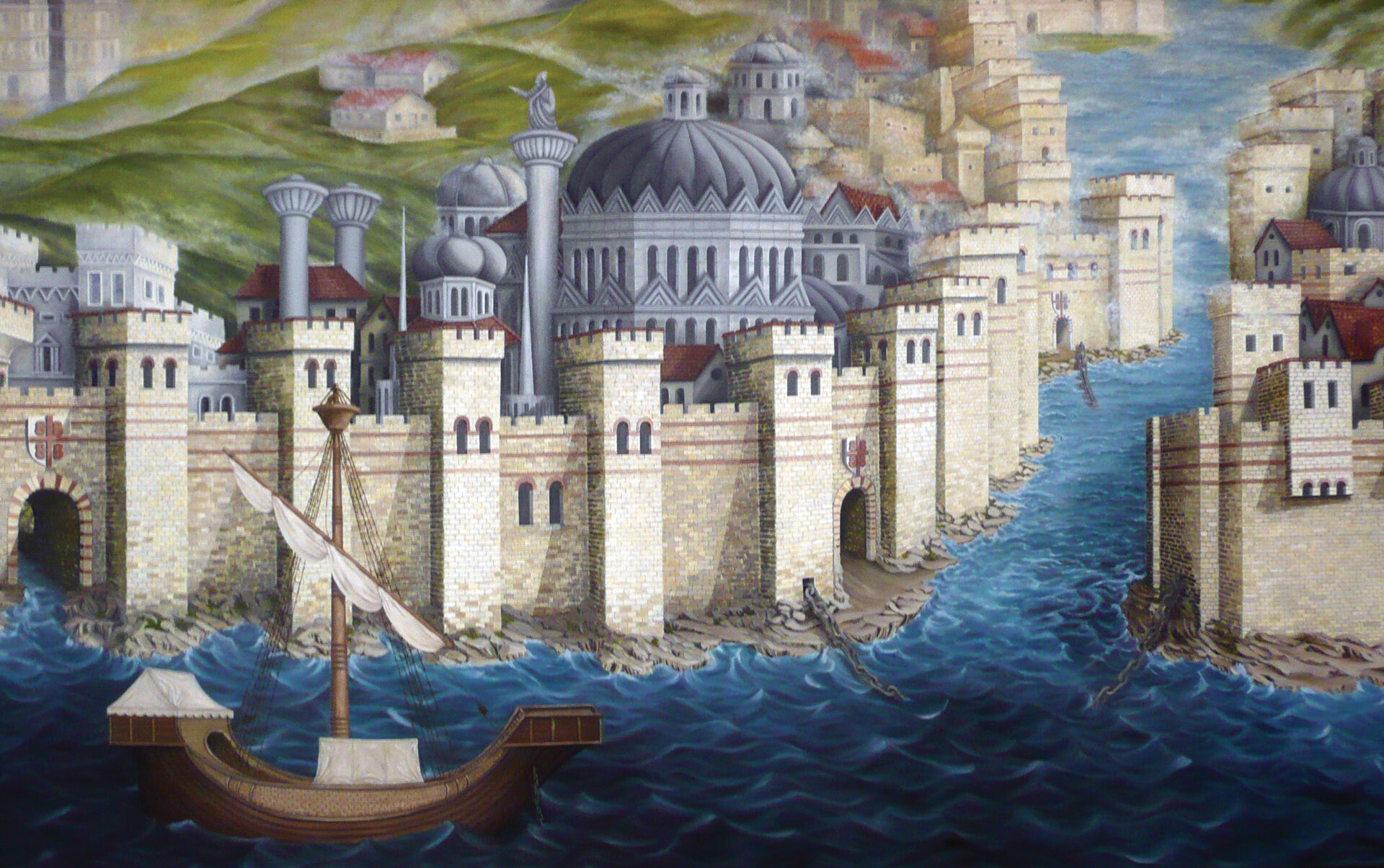
The crusaders’ morale was restored when the Venetians turned over 150 ships to serve as transports. Of the 150 ships, 100 were horse transports and 50 were passenger transports. The horse transports were a hybrid galley and sailing ship with doors in the sides near the water line for unloading the horses. The passenger transports were round-hulled sailing ships normally used for cargo transport. Several of the sailing ships were gigantic in comparison to the other vessels and capable of carrying hundreds of passengers. In addition to the 12,000 crusaders, 8,000 Venetian sailors and marines would participate in the crusade. The Venetians loaded 300 siege engines on the war galleys and the larger sailing ships.
The large fleet left Venice during the first week of October. It made many stops on the way to Zara to add provisions and crew. On November 10, the fleet dropped anchor outside the harbor. The Venetians negotiated with the Zarans in an effort to arrange a peaceful surrender, but at the last minute the Zarans changed their minds and decided to resist the Venetians. The crusaders and Venetians began a determined assault on the walled city on November 13 using mangonels, scaling ladders, and other equipment. The crusaders also planted a mine under one of the landward towers. After two weeks, the Zarans agreed to surrender on the condition that their lives be spared. Dandolo agreed to the terms, but once the Venetians gained control of the city, he ordered the execution of some Zarans who were known enemies of Venice.
The attack on Zara did not sit well with Innocent III. He promptly excommunicated both the crusaders and the Venetians. He would eventually rescind the excommunication of the crusaders, but not the Venetians. With winter almost upon them, the Venetians advised the crusaders that it was best to winter at Zara and resume the expedition in the spring.
The enormous fleet sailed to Corfu in early May 1203. Alexis Angelus arrived on the island bearing a letter of recommendation from his brother-in-law, Philip of Swabia, who urged the leaders of the crusade to support the Byzantine prince in his quest for the throne. Boniface and the other prominent nobles were tantalized by the prince’s promises. Alexius Angelus pledged in the subsequent Treaty of Zara that he would pay the crusaders and Venetians 200,000 silver marks and furnish substantial support for their expedition to the Holy Land. The treaty was signed, and the fleet set sail for Constantinople on May 24.
On June 23, the fleet anchored in sight of Constantinople. The crusaders had never seen anything like what they beheld that morning. “Those who had never seen Constantinople before gazed very intently at the city, having never imagined there could be so fine a place in the whole world,” wrote Villehardouin. “They noted the high walls and lofty towers encircling it, and its rich palaces and tall churches, of which there were so many that no one would have believed it to be true if he had not seen it with his own eyes. There was indeed no man so brave and daring that his flesh did not shudder at the sight.”
The fleet sailed past the city in a long line the following day. The war galleys sailed in the front followed by the sailing ships. The crusaders landed on the Asiatic shore opposite the imperial city to gather corn and livestock.
The same day, a delegation sent by Alexius III arrived by boat. The leader of the delegation told the crusaders that the emperor was willing to give them provisions if they left his land. The crusaders scoffed at the delegates. They told the emissaries to inform the emperor that he should abdicate immediately so that his nephew could take the throne that rightfully belonged to him. Alexius III ignored the demand.
The Latin Christians expected the supporters of Alexius Angelus to visit their camp to discuss plans for unseating Alexius III, but no one arrived. After a number of days had passed, Dandolo ordered a squadron of 10 galleys to cruise past the city walls on July 2 with the young prince aboard. The purpose of the trip was to gauge the reaction of the residents to the presence of the prince.
The galleys “rowed back and forth in front of the walls and showed the people the young man, asking them if they recognized him as their lord,” wrote chronicler Robert of Clari, a knight from Picardy who participated in the Fourth Crusade. “The inhabitants said they did not know who he was.” The people of the imperial city were openly hostile to the would-be emperor. They laughed, jeered, and shouted insults. It was a shock not only to the prince, but also to the Latin Christians who had brought him. If the Latin Christians were to be repaid, they would have to free Isaac II by force and install him and his son as co-emperors.
The Byzantine Empire was under considerable pressure from its neighbors at the beginning of the 13th century. To the east, the Seljuks controlled a sizable portion of Anatolia. To the north, the Bulgarians and the Hungarians were steadily expanding. Although Alexius III recently had signed a peace treaty with the Bulgars, war could break out again any time. The emperor had no commercial ties with Venice; his ties were with its bitter rivals Genoa and Pisa.
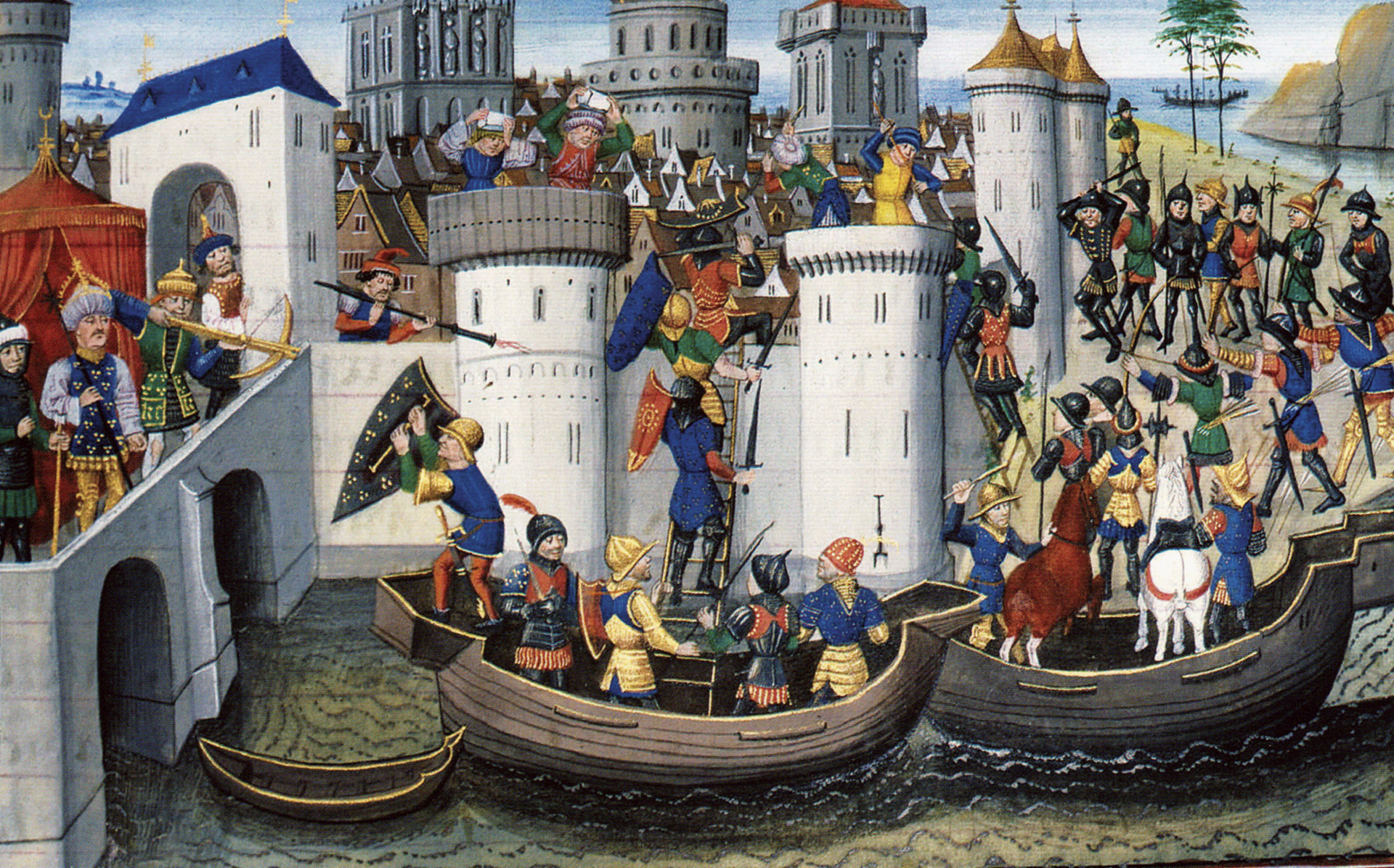
Alexius had seized power from his brother Isaac in 1195, but he did not improve the lot of his people. He was weak, lazy, and incompetent. He showed no interest in the day-to-day administration of the empire. Instead, he left that to his closest advisers. Despite all of these factors, the Byzantines still took great pride in their reputation as the most civilized people in Europe.
If the Latin Christians intended to try to put the young prince on the throne by force, Alexius III could field 50,000 troops, mostly mercenaries, to resist them. The most loyal were the 5,000 men of the Varangian Guard. The rest were Slavs, Pechenegs, Turks, and Pisans. Only the Varangians were comparable to the French knights, who had been schooled in the art of war from a young age.
After the humiliating episode beneath Constantinople’s seaward wall, it was clear that Isaac II and his son Alexius Angelus would have to be seated on the throne as co-emperors by force. Since the crusaders needed the money to pay off the Venetians, and Dandolo wanted the remainder of the debt paid off, the Latin Christians resolved to attack the city. It was a daunting undertaking. The Umayyad Caliphate had tried twice, once in the 7th century and again in the 8th century, and failed. Nevertheless, Dandolo and Boniface began directing preparations for an assault. It would begin with an attack on the Tower of Galata across the Golden Horn from the city.
The Venetian fleet set off on the morning of July 5 to assault the Tower of Galata, which housed the windlass that controlled the great chain blocking access to the Golden Horn. Galata, a suburb of Constantinople, was situated on the opposite side of the Golden Horn from the city. Barges carrying crossbowmen and archers landed in the first wave. They strode onto the beach and fanned out to cover the landing. The second wave consisted of Venetian war galleys that towed the horse and infantry transports to the beach. While the infantry formed up, the knights disembarked with their horses. “The knights issue from the transports, and leap into the sea up to their waists, fully armed, with helmets laced, and lances in hand,” wrote Villehardouin.
Although Alexius III did not contest the landing, he and his army were drawn up nearby. A missile duel ensued between the two sides until the crusader vanguard, led by Baldwin, began to advance toward the Greeks. It is unclear why Alexius led an army out of the city when he did not intend to give battle. He might have thought the crusaders were not planning on committing all of their forces to the attack on the tower, but they did just that. Galata was unfortified save for the garrisoned round tower. When the Byzantine emperor saw the Latin knights advance with their lances, he ordered a general withdrawal. The contingent of the Varangian Guard that garrisoned the tower would have to fend for itself. After the crusaders pillaged the abandoned Greek camp, they decided to bivouac for the night. They had no intention of launching a hasty attack on the well-defended tower.
Before the crusaders had a chance to mount their assault on the following morning, the Varangians sallied forth hoping to catch the crusaders by surprise. Coming to their aid were several barges filled with Greek infantry that sailed across the Golden Horn. “Then a cry was raised in the host, and our people ran together from all sides, and drove back the foe with great fury, so that many were slain and taken,” wrote Villehardouin. Fierce hand-to-hand fighting lasted throughout the morning until the crusaders eventually drove back the attackers. The Greeks from the city attempted to escape on their barges but most were either cut down or drowned. As for the garrison, it tried to conduct a fighting retreat, but the knights and sergeants followed closely, attacking them as they fell back. “The men of our host pressed them so hard that they could not shut the gate,” wrote Villehardouin. The garrison, which had been greatly reduced in the fighting, decided to surrender rather than face certain slaughter if the crusaders took the tower.
Once inside the tower a group of crusaders lowered the chain blocking the Golden Horn and the Venetian war galleys raced into the inlet and sank all of the Greek ships. During the Umayyad sieges, the Golden Horn had remained under the control of the Byzantine navy, which greatly hampered the siege efforts. Although the crusaders were substantially outnumbered by the Greeks, control of the harbor would enable them to attack the seaward walls along the Golden Horn, which were not as high as those on the landward side.
The crusader infantry departed Galata on July 11 and marched north along the Golden Horn until they reached the stone bridge that carried foot traffic from Galata to the imperial city. The Greeks had destroyed the bridge over the Barbsis River to deny it to the attackers, so the crusaders repaired it in 24 hours. Once across, the crusaders established their camp atop the hill where the Monastery of Saints Cosman and Damian was located beyond the city’s landward wall.
The landward wall that stretched across the peninsula from the Sea of Marmara to the Golden Horn was almost six kilometers long. In the 5th century, Emperor Theodosius ordered the construction of a double wall that averaged about 30 feet in height. The crusaders were camped opposite the Blachernae Palace that had a single 45-foot-high wall. Boniface and his subordinate commanders decided to launch their attack against the sector of the landward wall nearest the Golden Horn in order to stay in close contact with Dandolo and his naval commanders. The leaders of the crusade set their troops to work building a palisade with a trench around it.
For the next five days, the Latin and Greek armies exchanged fire with their siege artillery. To keep the crusaders off balance, Alexius III ordered regular cavalry forays throughout the day and night to harass them. Boniface divided the crusader army into seven battalions. To counter the Greek cavalry probes, one crusader battalion was on alert at all times. In some of the engagements, the crusaders chased the Greeks all the way back to the gates of the city. It was a dangerous game as the Greeks atop the walls threw large stones down at any of the knights and mounted sergeants who got too close to the walls.
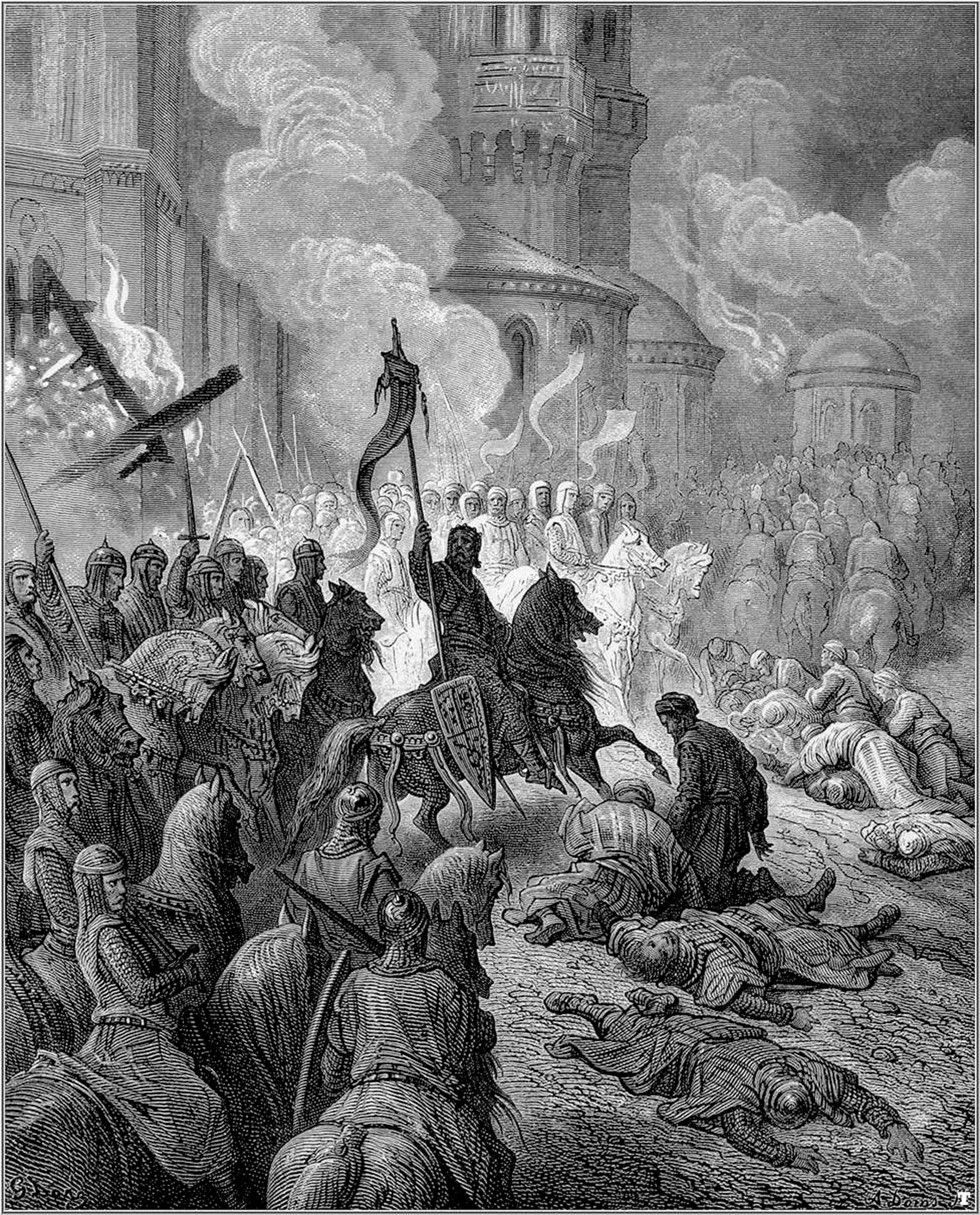
While the crusader assault on the Blachernae Palace was in full swing, the Venetian war galleys and the largest of the sailing ships positioned themselves in the Golden Horn to attack the seaward wall near the Gate of Petrion. To protect their ships from stones hurled from Greek mangonels, the Venetians draped hides and vines over their vessels to soften the impact of the projectiles. For offensive purposes, the Venetian crews constructed large siege towers atop the forecastles of the galleys and the largest of the sailing ships. The siege towers served as platforms for the mangonels. The Venetians also ingeniously devised a way to suspend gangplanks from the masts and yard-arms that were raised and lowered by rope tackles. These gangplanks served as a flying bridge for Venetian marines to assault the top of the city’s walls.
After Dandolo and his marine escort landed on the Golden Horn beach on July 17 there followed “a grand and marvelous assault on the city,” wrote Villehardouin. In furious fighting, the Venetian marines charged across the flying bridges onto the seaward wall and captured a number of towers. The Greeks defending that portion of the wall panicked and withdrew. At that point, the Venetian marines fought their way to the gates and opened them for their fellow soldiers. The Venetians ultimately gained control of 25 of the 110 towers along the Golden Horn.
When Emperor Alexius learned that his troops had abandoned part of the wall, he ordered a counterattack. As the Venetians fell back, they lit fires in the city. The wind blew the fire toward the Greeks, which bought the Venetians time to withdraw to the towers they had captured.
While the Greek infantry counterattacked the Venetians on the seaward wall, Alexius III led the Greek cavalry out of St. Romanus Gate in the landward wall toward the crusader camp. Alexius meant to turn Boniface’s right flank, but three crusader battalions led by Baldwin rode to check their turning movement. The other four battalions remained near the fortified camp in case another force of Greeks advanced from another gate. Boniface, who led the reserve, ordered every cook and page to pick up a weapon and help protect the camp.
Alexius had nine battalions numbering about 30,000 troops. His battalions were about twice the size of the crusader battalions. When Baldwin’s crusaders were within crossbow distance of the Greeks, he ordered them to withdraw. He feared that they had gone too far to receive reinforcements in a timely manner if attacked. The Count of St. Pol and Lord Peter of Amiens, leading the second of the three battalions accompanying Baldwin, refused to withdraw, believing that retreating was a shameful act. Baldwin, who had already begun withdrawing his battalion, rode back to their aid. By that time, the crossbowmen and archers on both sides were engaged in a fierce duel.
The fighting amounted to nothing more than a skirmish, though. Neither Alexius nor the majority of his subordinate commanders had the stomach for major bloodshed. Despite their larger numbers, the Greeks were intimidated by the Latin soldiers. “The nagging idea of flight and the faintheartedness of those about him thwarted Alexius from what needed to be done,” wrote Byzantine chronicler Nicetas.
Alexius’ main intention had been to force the Venetians to come to the aid of the crusaders. The tactic worked perfectly because when Dandolo learned that the crusaders were facing a major attack by the Greeks, he ordered his men to withdraw from the city.
But the Venetians’ ability to penetrate the city’s defenses was enough to compel Alexius III to flee the city that night. He not only took enormous quantities of gold and precious jewels with him, but also his imperial regalia, as he intended to continue his rule from another part of the empire. After he departed, the people of the city opened the gates to the Latin army. In a critical move, the Varangian Guard agreed to accept Isaac II and his son as co-emperors. As the leaders of the Latin crusade had intended, Prince Alexius and his father were enthroned on August 1. The young prince became Alexius IV.
The Latin army waited four months for payment. During that time, Alexius IV paid them the equivalent of 110,000 silver marks, but was unable to pay them the remaining 90,000. He faced a couple of serious financial problems: Alexius III had fled with most of the funds in the imperial treasury and the Byzantine clergy and his subjects vehemently resisted his attempts to collect taxes.
A delegation of Latin Christians met with Alexius IV in his imperial court in early November. They informed him that they were willing to give him another four months to pay the remaining 90,000 silver marks called for in the Treaty of Zara. Alexius’ advisers were outraged that the crusaders were placing demands on the emperor. Alexius was in a terrible bind. If he sided with the crusaders and appeared willing to meet their demands, he would lose the respect of his advisers and make himself vulnerable to a coup. Conversely, if he alienated the Latin army, the crusaders and Venetians would more than likely attack the city with the aim of exacting the remaining sum through plunder. Alexius sided with his advisers, informing the delegation that he would make no further payments to them.
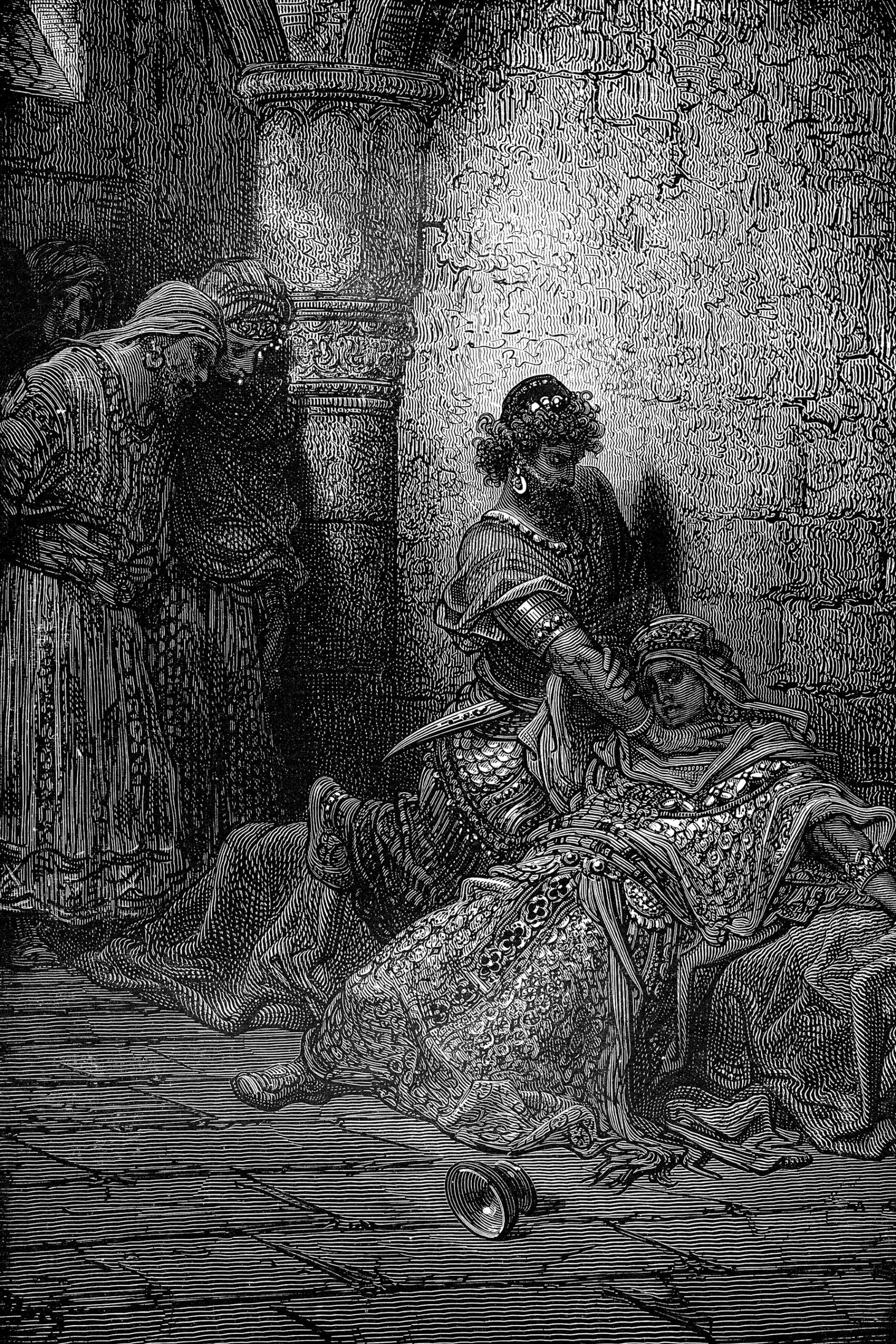
When the delegates debriefed Dandolo, he suggested to Boniface that they should overthrow Alexius IV and replace him with one of the leaders of the crusade. Dandolo reasoned that if a Latin prince was installed on the Byzantine throne then the Venetians would get exclusive trade rights with the empire.
As a result of the breakdown in relations, Boniface’s men pillaged homes and villages outside city walls in December and January. In retaliation, the Greeks sent fire ships toward the Venetian fleet, but the experienced mariners easily intercepted them. During that time Alexius IV did not organize any major attacks against the Latin invaders. His failure to attack the Latin Christians infuriated his advisers, the Senate, and the citizenry.
On January 27, 1204, a mob coerced the Byzantine Senate into electing nobleman Nicholas Canabus to the throne. Nicetas says Canabus was “versed in generalship and war and its business.” Because of this overt threat to his rule, Alexius IV requested protection from the crusaders. Boniface agreed to send a detachment to guard Alexius. This gave one of the emperor’s high counselors, Alexis Doucas, who had secretly been plotting against Alexius IV, the opening he needed to seize the throne for himself. But he had to move quickly before the crusaders arrived the following day.
Doucas, who was known as Murzuphlus for his unusually bushy eyebrows, awoke Alexius IV on the night of January 27 and told him that he must leave his bed chambers because a mob was on its way to seize him. When Alexius entered another room, he was put in chains and led away to prison. Murzuphlus already had bribed the eunuch who guarded the royal treasury and persuaded the Varangian Guard to support him. In the following days, Isaac II died in prison from natural causes and Alexius IV was strangled while in captivity.
On February 5, Murzuphlus was crowned Alexius V in the Hagia Sophia. Two days later, he met with Dandolo. The elderly doge demanded the remaining 90,000 silver marks owed to the Latin Christians. When Murzuphlus tried to negotiate an alternate resolution, Dandolo reiterated his ultimatum and departed.
The Latin Christians were confident they could gain control of the city partly based on their previous success against the seaward wall along the Golden Horn. Once inside the city, they reasoned, they could recoup the money owed them by force. Therefore, they entered into an agreement among themselves that stipulated that the Venetians would receive 200,000 owed to them by the crusaders regardless of what they already had received from Alexius IV. Furthermore, they would elect one of the leaders of the crusade as the emperor of a new Latin empire. A Venetian patriarch would assist him in administering the empire.
In March the Latin Christians began preparing for a new assault on the city. The Venetians not only overhauled their siege engines but also “raised ladders from the yards and masts of the vessels, so high that they were a marvel to behold” in preparation for a fresh assault on the seaward wall, wrote Villehardouin. As for the Greeks, Alexius V ordered his engineers to raise the height of the towers by building two or three new stories made from wood. In addition, Murzuphlus had his troops dig two parallel ditches in front of the seaward wall along the shore of the Golden Horn. He also sent orders to outlying provinces to dispatch companies and battalions to help defend the imperial city.
The Venetians assailed the seaward wall along the Golden Horn on April 8. Unfortunately for the seafarers, Murzuphlus’ plan to raise the height of the towers worked brilliantly. The Venetian masts could not reach the highest floors of the towers, and the Greek mangonels did considerable damage to the Venetian vessels. The Venetians withdrew to develop new tactics.
On April 12 the Venetians attacked the same stretch of wall. They had extended the height of their masts and ladders in the interim. But more importantly, they assigned a pair of ships to assault each tower instead of a single ship as they had done four days earlier. Despite a steady barrage from the Greek mangonels and furious missile fire from Pisan crossbowmen, the Venetians pressed their attack. Two of the giant roundships, the Pilgrim and the Paradise, served as excellent platforms for their assault. A heavily armored French knight, Andre d’Urboise, leaped from the mast of the Paradise onto the top floor of one of the towers. He fought like a demon, driving the defenders back with his sword. Although he eventually was slain, he bought enough time for his fellow Frenchmen to secure the tower. The crusaders eventually expanded their foothold to four towers.
At the base of the seaward wall, a contingent of 10 knights and 60 sergeants under Count Peter of Amiens managed to hack their way through one of the city’s gates. “When they came to the postern, they began to hew and pick at it very hardily; but the bolts flew at them so thick, and so many stones were hurled at them from the wall, that it seemed as if they would be buried beneath the stones, such was the mass of stones thrown from above,” wrote Robert of Clari. Nevertheless, they managed to cut a breach large enough for one man to crawl through. One of the knights, Aleumes of Clari, crawled through and single-handedly drove back the defenders so that other men could follow him through the passage. Together, the band of crusaders drove off the defenders and opened the gate for their fellow soldiers.
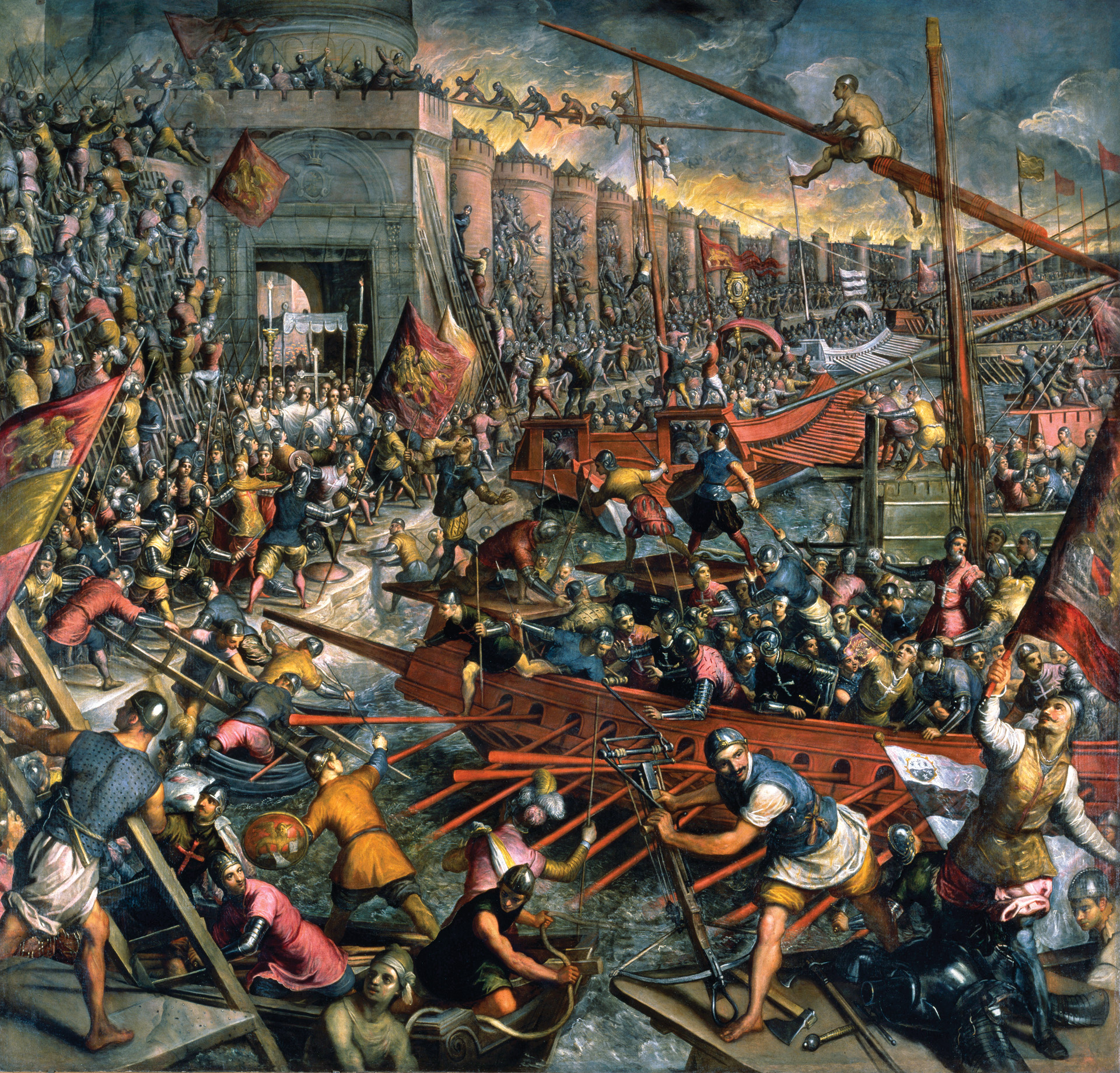
Murzuphlus rode his horse through the streets trying in vain to rally the fleeing soldiers. Neither the Greeks nor the Varangians could be compelled to mount a counterattack. That night the crusaders once again set fire to part of the city. Realizing that he faced almost certain execution, Murzuphlus fled by boat under cover of darkness. He was apprehended and brought back to the city where he was flung to his death from the top of the Column of Theodosius.
The citizens of Constantinople sent a delegation to Boniface the day after the battle to discuss the future of the city, but the crusaders had nothing to discuss with them. The crusaders dressed for battle that day and entered the city. They began the customary three-day sack of a conquered city that had resisted peaceful surrender. The first targets of the Latin soldiers were the Orthodox churches and the wealthy citizens who were stripped of all their belongings of value that could be carted away. Some of the religious and military leaders took precious relics back to their own churches and castles.
The Latin Christians “discovered in abundance, here, there, and everywhere … that they were all suddenly transformed from aliens and paupers into very rich citizens,” wrote chronicler Gunther of Paris. The crusaders compiled gold and silver, magnificent gems, ornate clothing, valuable trade goods, and all manner of commodities, according to Gunther. So much loot was gathered “that no one could estimate its amount of value,” wrote Villehardouin. The plunder “included gold and silver, table services and precious stones, mantles of squirrel fur, ermine and miniver, and every choicest thing to be found on earth,” wrote Villehardouin.
Following the sack of the city, Boniface ordered his soldiers to turn over the loot so that it could be distributed according to the pact made before the siege. The leaders collected 300,000 silver marks from the common pool of booty. Of that amount, the Venetians received 200,000 silver marks, and the crusaders received 100,000. In his account of the crusade, Villehardouin estimated that individual crusaders and Venetian mariners hid booty amounting to an additional 500,000 silver marks.
A council of six Frenchmen and six Venetians decided who would rule the empire and govern the imperial city. Of course, they adhered to Dandolo’s wishes. Boniface was passed over in favor of Baldwin on the grounds that the Marquis of Montferrat not only had been too close to Alexius III but also had strong ties to Genoa, which was Venice’s chief maritime rival. To assist Baldwin in ruling the city, the council appointed Venetian Tommaso Morosini to serve as the patriarch. As for Boniface, the council selected him to rule as King of Thessalonica.
The council granted Venice free trade rights throughout the empire and barred Genoa and Pisa from trading in its territories. Venice also received control of key ports on the eastern shores of the Adriatic, the coast of Greece, the western shore of Anatolia, and on islands in the Aegean Sea.
On May 16, the Count of Flanders-Hainault was crowned Baldwin I of the new Latin Empire of Constantinople. Only a few of the crusaders continued to the Holy Land; most chose to remain in the new empire or return home.
Baldwin faced an immediate state of war because of internal unrest in the outlying provinces of the empire andattacks by the Bulgars led by Tsar Kaloyan. Baldwin died following his capture by the Bulgars at the Battle of Adrianople fought April 15, 1215. Boniface, died fighting the Bulgars at the Battle of Messinopolis on September 4, 1207. Assailed from all sides, the Latin Empire of Constantinople eventually fell to the Nicaeans in 1261.
The leaders of the Fourth Crusade had compromised themselves by bowing to Venetian desires and succumbing to their own greed. They contributed nothing substantial to the Kingdom of Jerusalem other than furnishing a small number of reinforcements. They waged war against fellow Christians at Zara and Constantinople. Theirs was a shameful legacy.
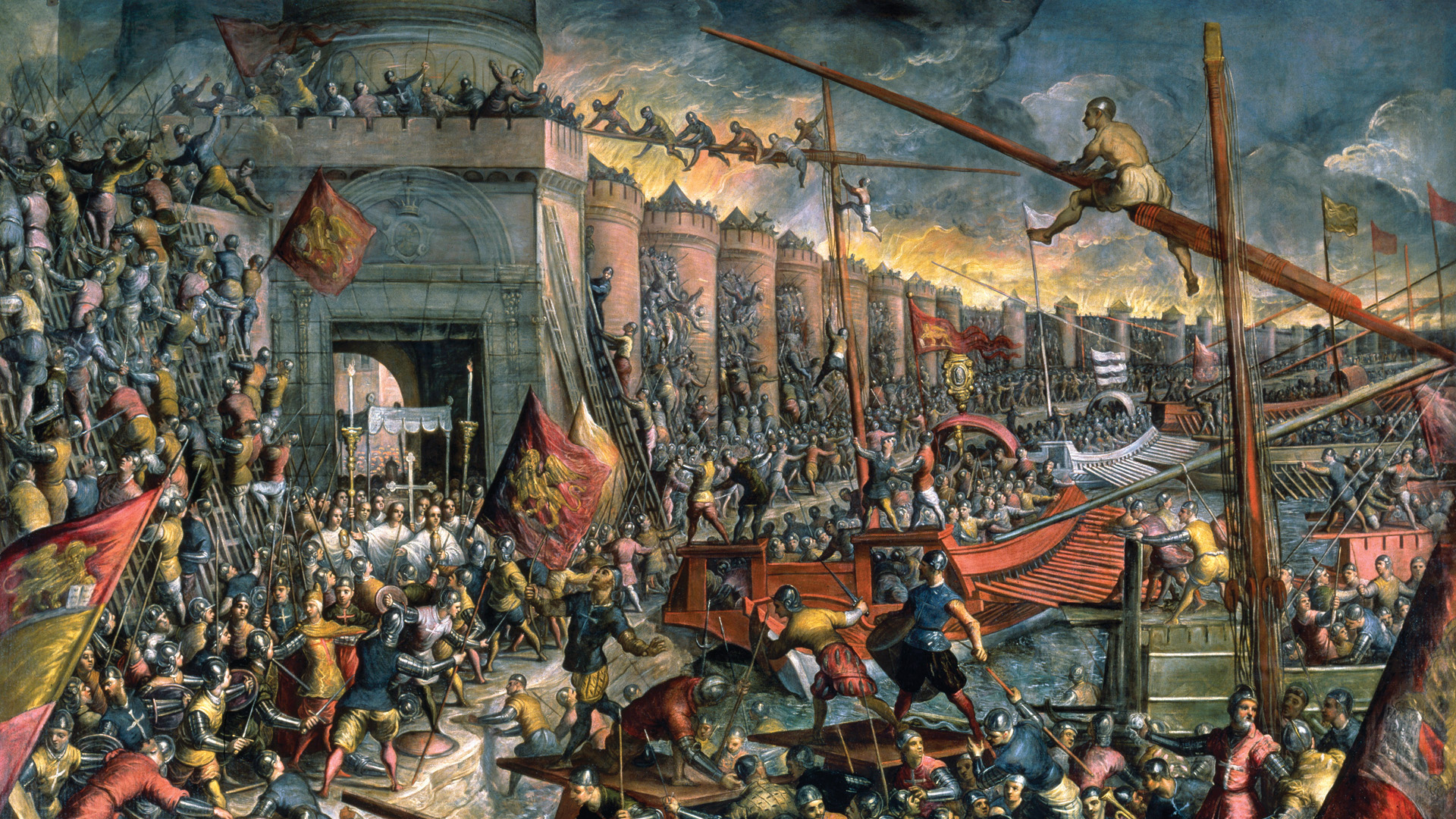
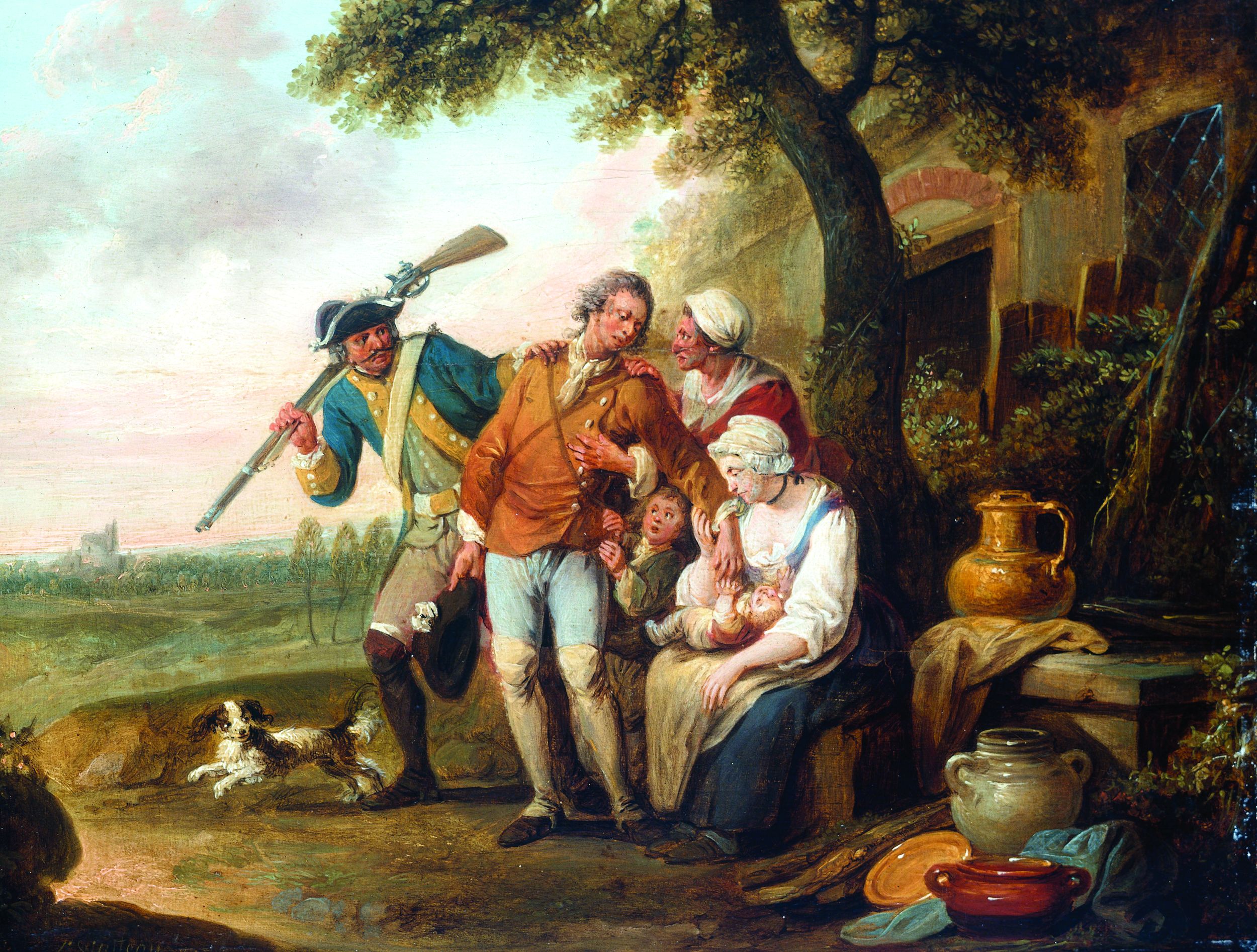
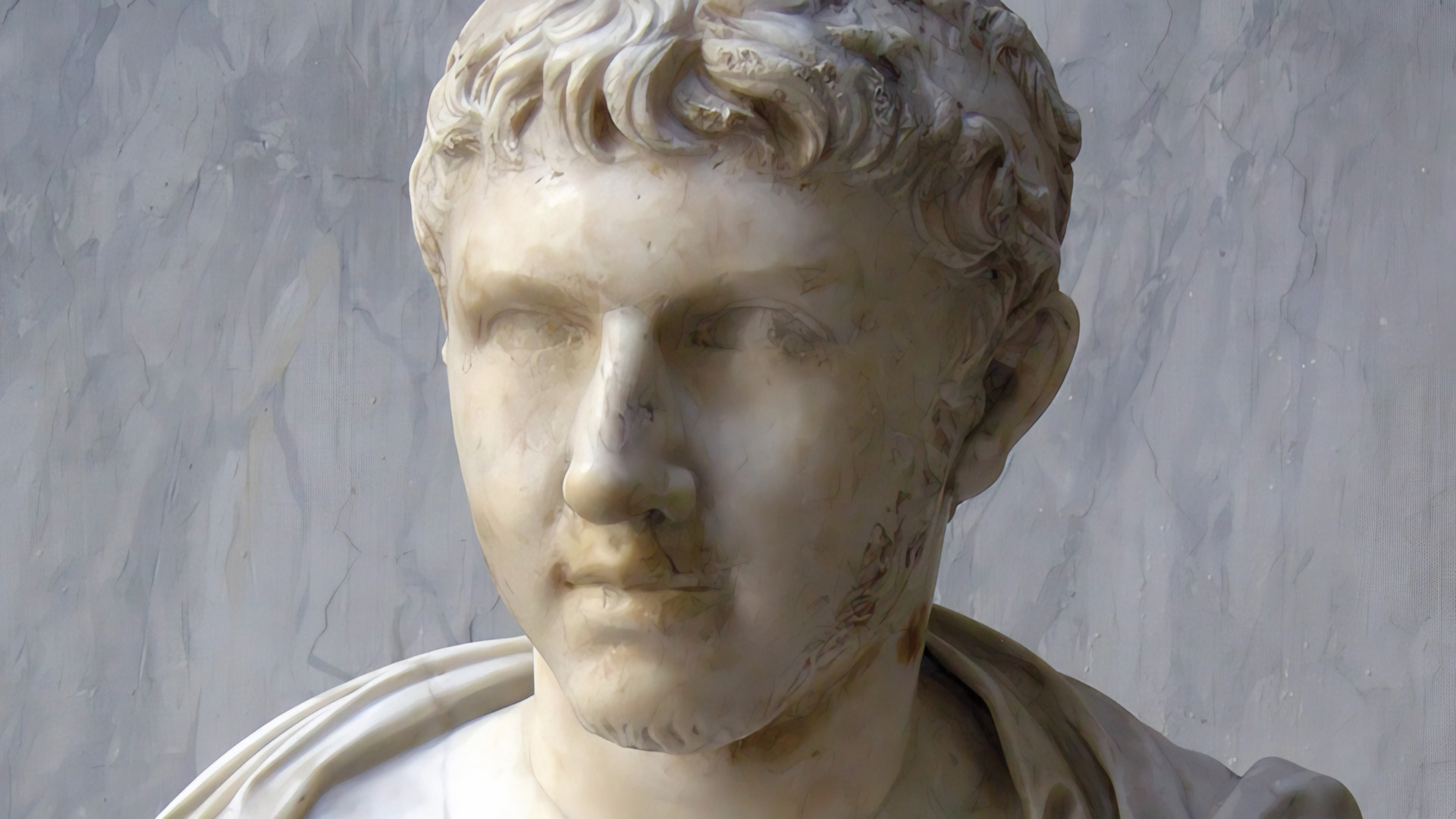
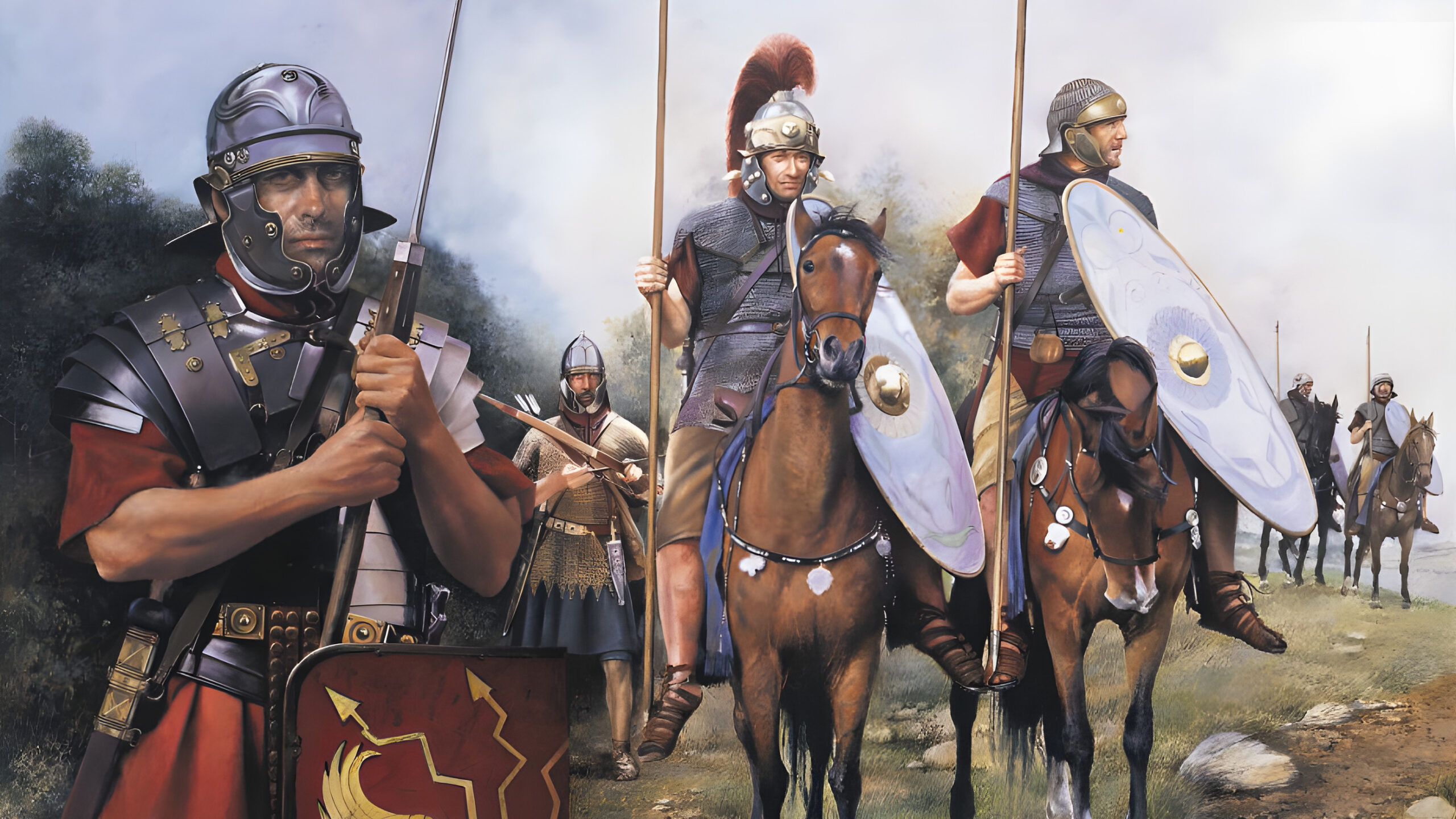
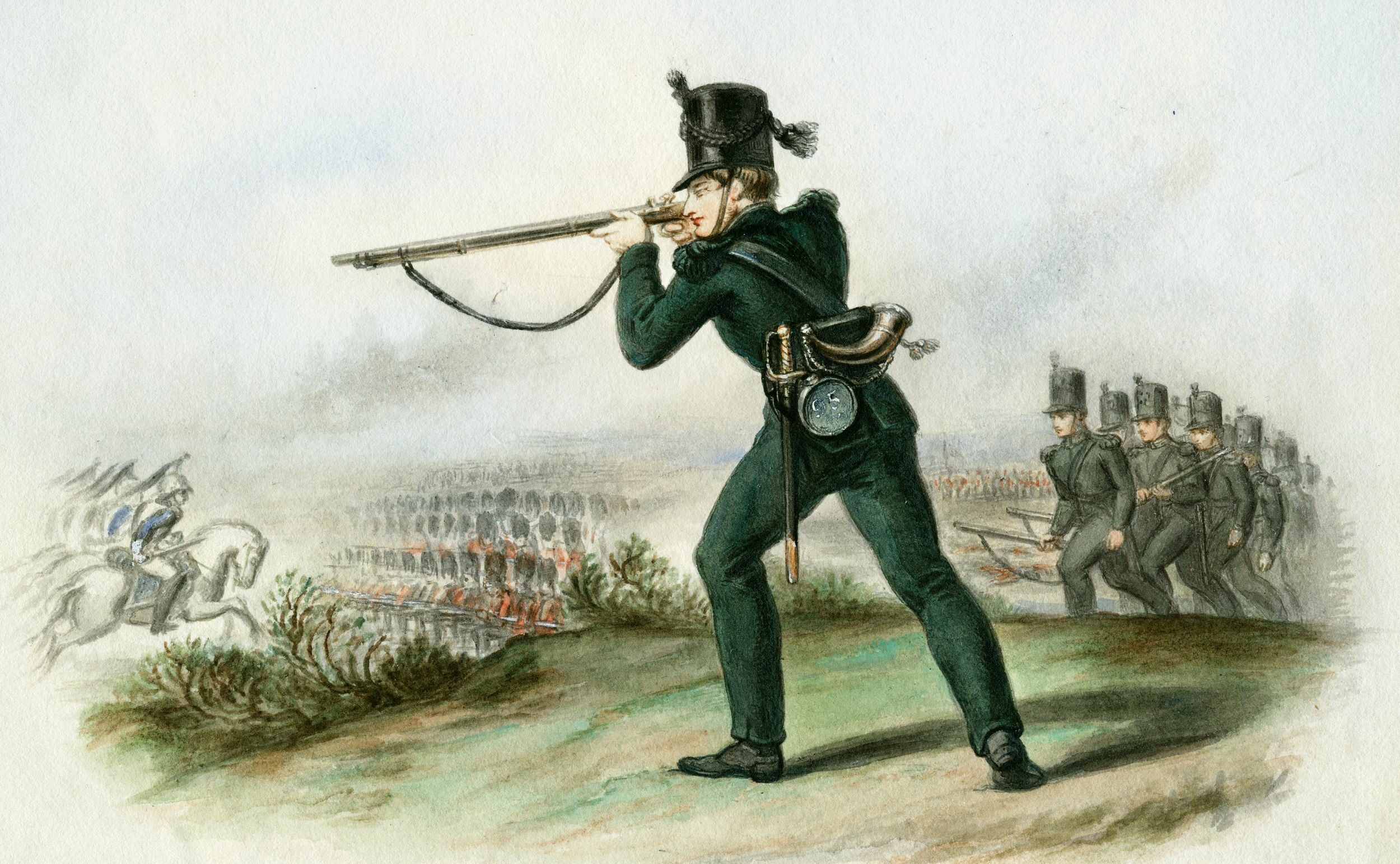
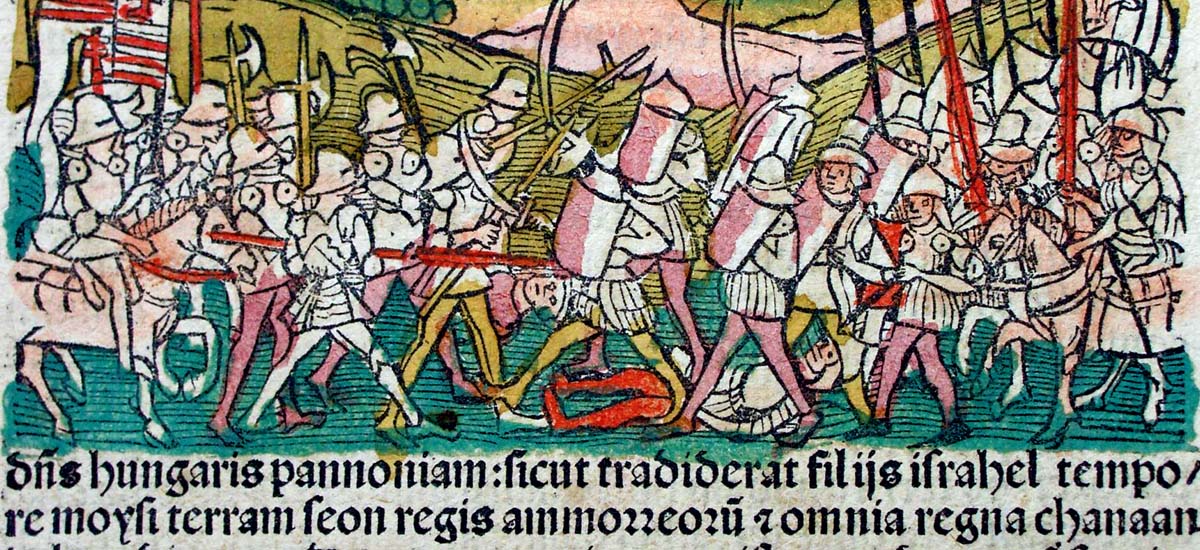

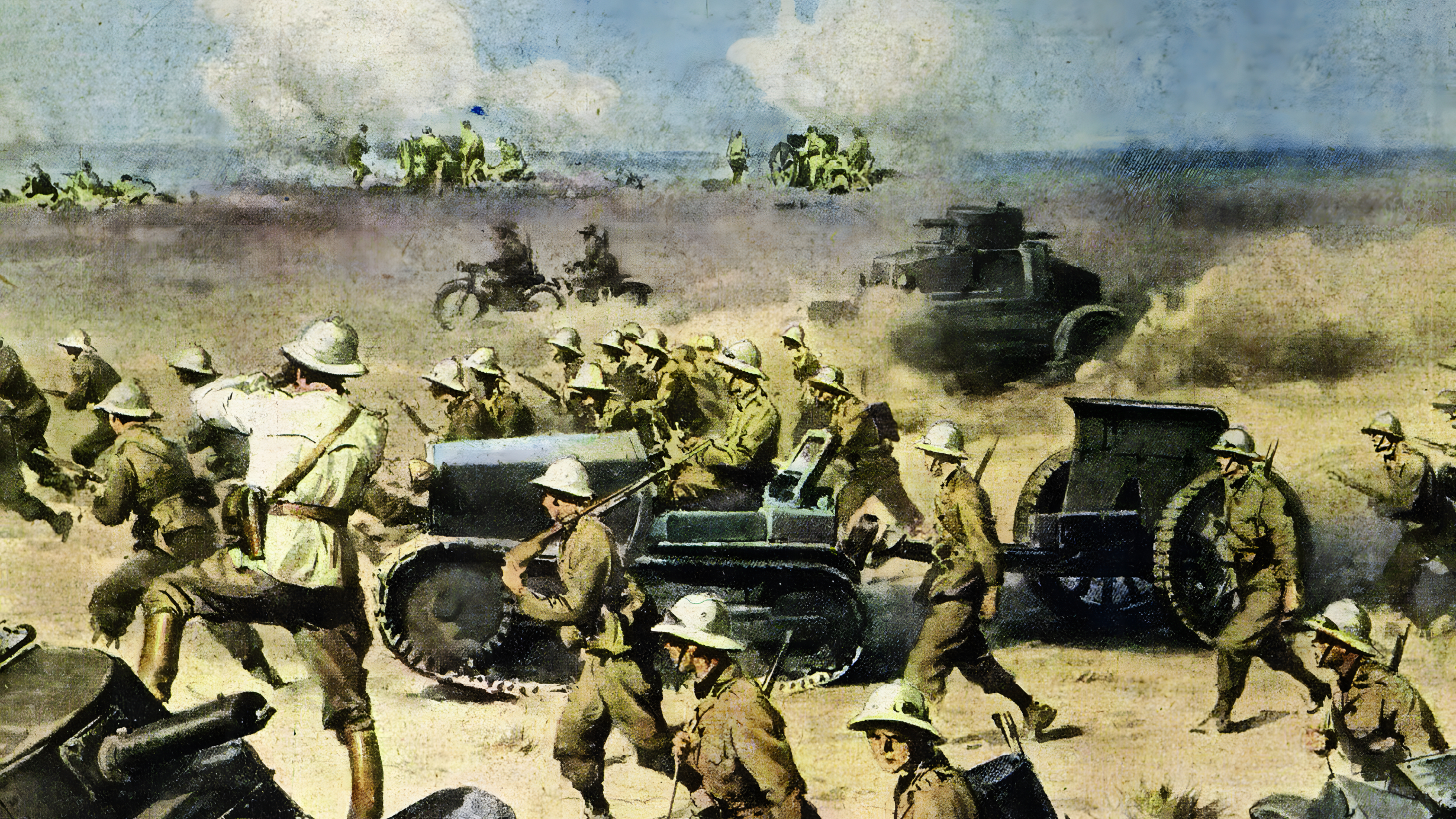

Join The Conversation
Comments
View All Comments